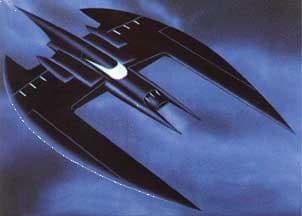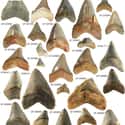-
(#13) A Documentary On The Discovery Channel Fooled People Into Thinking It Still Existed
In 2013, the Discovery Channel kicked off its highly popular Shark Week with a "documentary" called Megalodon: The Monster Shark Lives. No indication was given that the piece was a work of fiction; instead, it features actors portraying scientists talking about hunting the creature. In the false narrative, a 67-foot-long megalodon terrorizes the coast of South Africa.
Scientific facts show that the continued existence of the megalodon is next to impossible. No teeth newer than 2.6 million years old have been found, intact or in pieces.
-
(#8) Its Giant Teeth Have Been Found Around The World
In July 2017, a young boy vacationing with his family in Myrtle Beach, SC, found a 5-inch-long megalodon tooth. As of August 2016, Jud Keeling of Suffolk, VA, has found 280 of the fossilized chompers. Teeth have also been found in Italy and Croatia.
-
(#2) Its Jaws Could Crush Cars And Whales
Studies conducted by Stephen Wroe of the University of New South Wales in Australia found that the large jaws of the megalodon likely generated a maximum 4,000 pounds of bite force pressure. Its bite force was 10 times that of the great white shark, and even greater than that of the fearsome Tyrannosaurus rex. Theoretically, the prehistoric shark could use its jaws to smash a car like a junkyard crusher - although its approximately 7-inch long teeth would likely not survive.
Fossils of baleen whales living at the same time as the megalodon show bite marks from the fearsome creature - the real reason for the strong jaws.
-
(#10) Whales And Turtles Served As Its Food
Fossil records suggest the megalodon went extinct an estimated 2.6 million years ago. This allows scientists to hypothesize which other animals lived at the same time. The Livyatan was a giant sperm whale that weighed 50 tons and was roughly the same length as the megalodon.
Other whales, such as baleen whales, also existed in the oceans with the prehistoric shark and were part of its diet. Seals may have been on the menu as well.
-

(#11) Its Continued Existence Would Require Several Changes To Its Diet And Habits
Despite the absence of any physical evidence, many people still believe in the megalodon's continued existence. However, the realities of its eating habits and sheer size should sway their opinion. The shark kept to shallower, warmer stretches of water, hunting whales, seals, and other marine life. It reached sizes of 60 feet in length, with a jaw that opened nearly 10 feet wide.
In order to avoid human interaction, the megalodon would need to travel deeper within the ocean to hide from the sheer number of cameras in the world. Furthermore, it would have to find a reliable food source.
-

(#3) Its Fossil Record Is Incomplete Due To Its Skeletal Makeup
Shark skeletons contain lots of cartilage, which does not hold up well after death. As a result, the megalodon's fossil record is incomplete. Estimates of the shark's appearance are based on what scientists have available to them: its teeth. The characteristics of megalodon teeth have led scientists to believe they were housed in a broad jaw. Sharks with broad jaws generally have a shorter face, like the great white.
Data collected from baleen whale bones with megalodon tooth marks have allowed other theories to emerge about how the giant shark looked.
In 2022, a study published in Historical Biology confirmed that scientists are still searching for proof of what the megalodon actually looked like. "The reality is that there are presently no scientific means to support or refute the accuracy of any of the previously published body forms of Otodus megalodon," the researchers said.
New Random Displays Display All By Ranking
About This Tool
Our data comes from Ranker, If you want to participate in the ranking of items displayed on this page, please click here.














